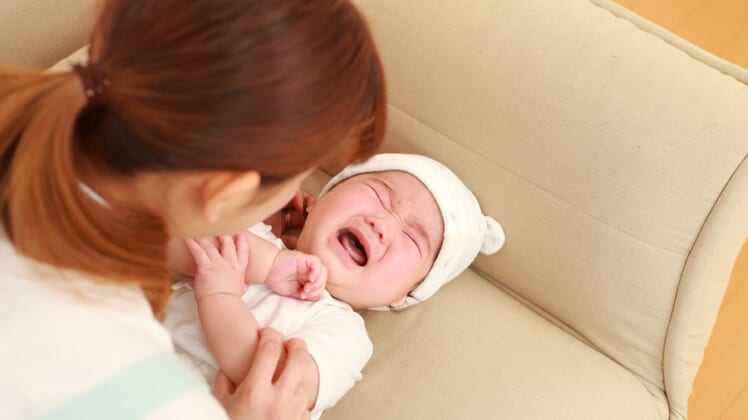
A few hundred years ago, doctors believed baby teeth could be deadly. In one year alone in 19th-century England, more than 5,000 babies supposedly died of teething. Today, we know that teething isn’t really dangerous. New teeth can make your baby cranky and uncomfortable, but the misery will soon pass. Here’s what you need to know to help both of you get through this trying time.
How can I tell if my baby is teething?
If you can feel a little bump or the top of a tooth on your baby’s gums, he’s teething. Don’t be alarmed if you see a small watery sac near the new tooth. This is an eruption cyst. It will pop by itself, and it’s best left alone.
Most babies start getting teeth around 6 months, but teething can start after just three months. Some babies don’t have teeth until after their first birthday. (Call a doctor if your baby doesn’t have any teeth after 14 months; he may have a hormonal problem that’s slowing his development.) The lower middle two teeth are usually the first to arrive, followed by the middle upper two teeth. It’s not uncommon for teeth on the sides to show up first. Your baby should have all of his baby teeth by the time he’s 3.
What are the symptoms of teething?
Some babies act like they don’t even notice the arrival of new teeth. But others definitely aren’t happy with the experience, and they have many ways of letting you know. A teething baby may cry for no obvious reason. He may also drool excessively or spend a lot of time chewing on toys. A study published in Pediatrics found that teething babies were also more likely than other babies to rub their ears, lose their appetite for solid foods, develop a minor rash on the face, have a slight fever (less than 102 degrees Fahrenheit), or have trouble sleeping.
If your baby seems seriously ill, don’t be too quick to chalk it up to teething. Call your doctor if your teething baby has a high fever, diarrhea, or vomiting. These shouldn’t be a part of the package.
What can I do to make my baby more comfortable?
The American Dental Association recommends gently rubbing a baby’s sore gums with a cool spoon, a wet gauze pad, or a clean finger. You might also let him gnaw on a refrigerated teething ring or a frozen wet washcloth. If your baby still seems miserable, you can give him a dose of infant pain reliever such as ibuprofen or acetaminophen. Talk to a doctor or dentist before trying a teething gel that numbs the gums. Although they’re sold over the counter, these products can be harmful in large doses.
Teething isn’t exactly a highlight of childhood — or parenthood, for that matter. But despite what people used to think in the 19th century, you’ll both live through it.
References
American Dental Association. Teething. http://www.ada.org/public/topics/teething.asp
Macknin, ML et al. Symptoms associated with infant teething: A prospective study. Pediatrics. April 2000. 105(4): 747-752.
Yale New Haven Children’s Hospital. Teething. December 2004. http://www.ynhh.org/pediatrics/newborn/teething.html
Yale New Haven Health. Teething. September 2003. http://yalenewhavenhealth.org/library/healthguide/en-us/illnessconditions/topic.asp?hwid=hw55254
Last Updated: March 11, 2015
Children’s Health Health Library Copyright ©2015 LimeHealth. All Rights Reserved.
